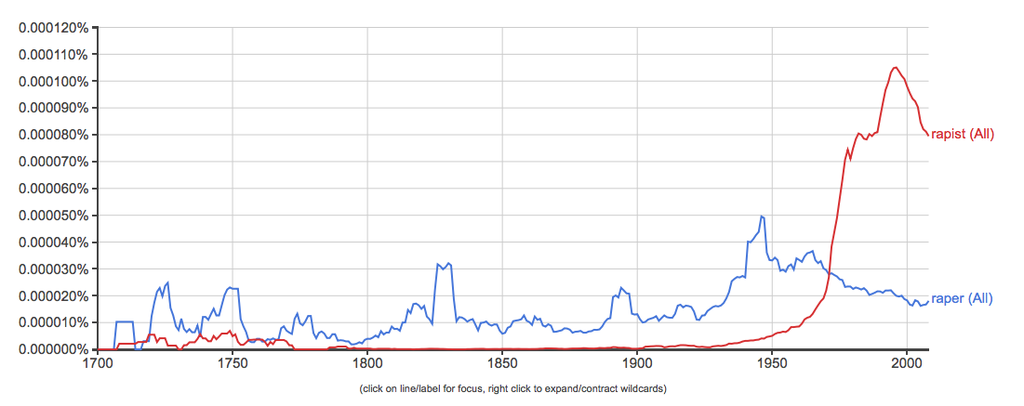I'veI’ve always been vaguely aware of 'raper'raper as an alternative to 'rapist'rapist, as a vaguely wrong sounding, possibly archaic formulation - nowadays.
Nowadays, it'sit’s most often heard from speakers of English as a second language, for whom the construction is slightly irregular compared to other similar verbs. But I'm But I’m also aware that I've seen the '-er'-er version of the word in older texts.
Well, today I happened to be curious while sitting at a computer and fed it into an ngram, and...

That is not the sort of graph I expected to see; the use of '-ist'-ist appears seemingly out of nowhere after over a century of dormancy in the mid 20th century, and by the mid 1960's1960s has skyrocketed in usage. Now I would expect an increase in generalin general at this time due to the rise of feminism and increased attention to sexual violence, but I'm curious as to the specific choice of the '-ist'-ist form over the '-er' variant; particularly-er variant; particularly in light of the sharp increase in the latters usage during World War II in 1940, presumably connected to growing reports in the west of the Japanese atrocities at Nanking.
Is there any documentation or research explaining how the '-ist'-ist formulation came to be dominant in current usage? What could be the reason for that sudden shift?
